Results
-
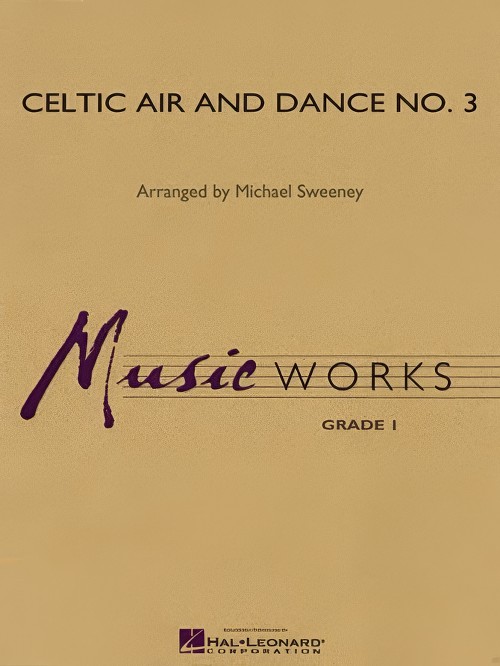 £47.50
£47.50Celtic Air and Dance No.3 (Concert Band - Score and Parts) - Sweeney, Michael
Continuing with Michael's popular series of "Celtic Air and Dance" arrangements, the third instalment opens with "Red is the Rose" (or "Loch Lomond") in a flowing ballad treatment. The lively "Bill Sullivan's Polka" follows and features various sections of the band. The flutes start things off followed by the rest of the woodwinds, trumpets, percussion, low brass and finally the entire ensemble in an energetic finish.Duration: 3:10
Estimated dispatch 7-14 working days
-
 £42.50
£42.50Le Lion de Belfort (SAT/B Choral Octavo - Pack of 25) - De Haan, Jan
Le Lion de Belfort was composed for the official inauguration of the sculpture Le Lion de Belfort: an enormous red sandstone lion that dominates the landscape of the French city of Belfort. This 22 metre long and 11 metre high lion symbolises the heroic French resistance during the Prussian siege of Belfort in 1870-1871. The composer added a narrator and three-part choir to the concert band instrumentation, who utilise texts written specially for the occasion by Jean Ehret. The work's premiere took place at the inauguration of Le Lion de Belfort on 28 November 2010, 130 years after sculptor Frederic Auguste Bartholdi (1834-1904) completed the statue.Duration: 9:00
Estimated dispatch 7-14 working days
-
 £3.99
£3.99Le Lion de Belfort (SAT/B Choral Octavo) - De Haan, Jan
Le Lion de Belfort was composed for the official inauguration of the sculpture Le Lion de Belfort: an enormous red sandstone lion that dominates the landscape of the French city of Belfort. This 22 metre long and 11 metre high lion symbolises the heroic French resistance during the Prussian siege of Belfort in 1870-1871. The composer added a narrator and three-part choir to the concert band instrumentation, who utilise texts written specially for the occasion by Jean Ehret. The work's premiere took place at the inauguration of Le Lion de Belfort on 28 November 2010, 130 years after sculptor Frederic Auguste Bartholdi (1834-1904) completed the statue.Duration: 9:00
Estimated dispatch 7-14 working days
-
 £174.99
£174.99Le Lion de Belfort (Narrator, Choir and Concert Band - Score and Parts) - De Haan, Jan
Le Lion de Belfort was composed for the official inauguration of the sculpture Le Lion de Belfort: an enormous red sandstone lion that dominates the landscape of the French city of Belfort. This 22 metre long and 11 metre high lion symbolises the heroic French resistance during the Prussian siege of Belfort in 1870-1871. The composer added a narrator and three-part choir to the concert band instrumentation, who utilise texts written specially for the occasion by Jean Ehret. The work's premiere took place at the inauguration of Le Lion de Belfort on 28 November 2010, 130 years after sculptor Frederic Auguste Bartholdi (1834-1904) completed the statue.Duration: 9:00
Estimated dispatch 7-14 working days
-
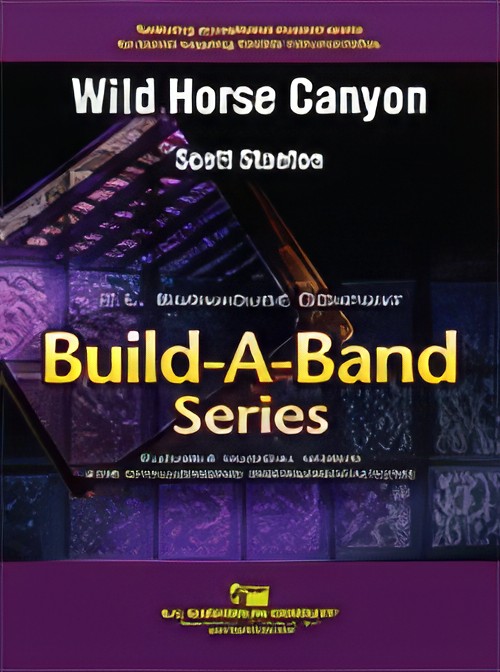 £60.00
£60.00Wild Horse Canyon (Flexible Ensemble - Score and Parts) - Stanton, Scott
Adapted by the composer for the Barnhouse Build-A- Band Series from his original concert band composition of the same name, Wild Horse Canyon is wonderful program music for very small bands suggesting the imagery of wild horses roaming free in the Red Rock canyons of Utah. Playable by any instrumentation as long as the four basic yet very interesting parts are covered. Perfect for any concert or festival performance!Duration: 4.00
Estimated dispatch 7-14 working days
-
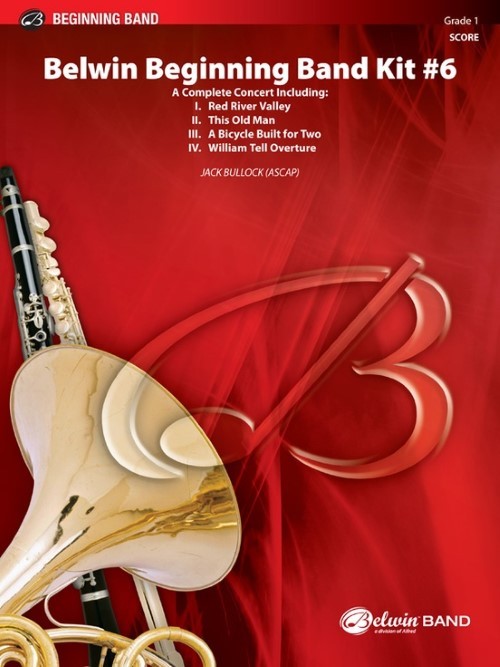 £62.95
£62.95Belwin Beginning Band Kit No.6 (Concert Band - Score and Parts) - Bullock, Jack
Great for the music budget, Jack Bullock's kit has four contrasting works and serves as a complete concert for young beginners.Titles:Red River ValleyThis Old ManA Bicycle Built for TwoWilliam Tell OvertureUse them all in one concert or save them for performances throughout the year.
Estimated dispatch 7-14 working days
-
 £76.99
£76.99Ayers Rock (Concert Band - Score and Parts) - Hogestein, Henk
The famous monolith Uluru (formally known as Ayers Rock) is the one of the attractions in the Northern Territory of Australia. This colossal red rock lies in the middle of a desert plain. At dusk, a beautiful spectacle develops as the setting sun envelops the rock in rose-red hues. There are tourists who used to climb the rock, while this is a taboo according to the indigenous religion of the Aboriginals. Besides, the climb is very strenuous. A walk around the rock is also an unforgettable experience. During a journey through Australia, Henk Hogestein was inspired by this rock; he composed this robust rock number to cherish the memory of it.Duration: 3:00
Estimated dispatch 7-14 working days
-
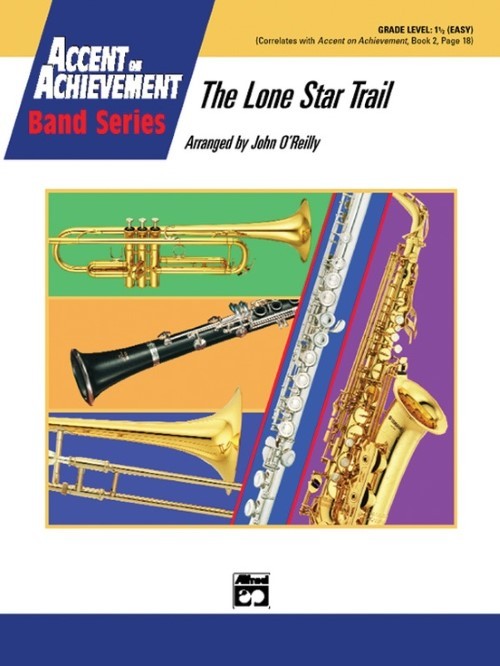 £41.50
£41.50The Lone Star Trail (Concert Band - Score and Parts) - O'Reilly, John
Take a musical journey on The Lone Star Trail with this delightful medley of three well-known Texas Folk Songs: Red River Valley, The Streets of Laredo, and The Yellow Rose of Texas. The contrasting styles of each tune will be a nice change of pace at your next concert. Duration: 2.30
Estimated dispatch 7-14 working days
-
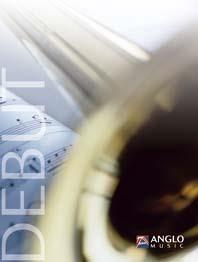 £79.99
£79.99The Painted Desert (Concert Band - Score and Parts) - Sparke, Philip
The south-western US state of Arizona has more than its fair share of stunning landscapes, natural phenomena and National Monuments. Best known is the Grand Canyon, but there are also numerous deserts, a petrified forest, extinct volcanoes and the huge Sunset Crater. Not surprisingly, it has featured as the backdrop to many Western movies. The Painted Desert is a narrow, crescent-shaped arc about 160 miles long which begins near the Grand Canyon and varies in width from 10 to 35 miles. It is largely void of vegetation and years of erosion by wind and rain have exposed sedimentary layers of rock up to 250 million years old. Chemical differences in the various layers result in an effect not unlike a multicoloured layer cake with contrasting hues of red, orange and pink, blue, grey and lavender creating a silent and barren landscape which looks like it has been hand-painted. As with much of the planet's stunning landscapes all the observer can do is stand and stare.Duration: 3:45
Estimated dispatch 7-14 working days
-
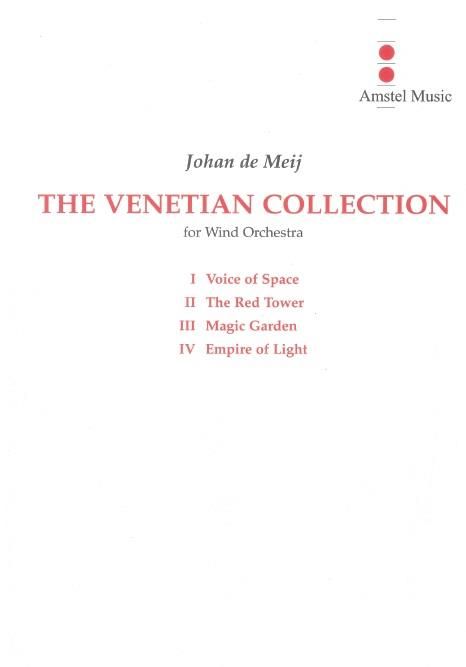 £499.00
£499.00The Venetian Collection (Concert Band - Score and Parts) - De Meij, Johan
The Venetian Collection by Johan de Meij consists of four movements which are all a musical reflection of the four paintings of the same names from the Peggy Guggenheim Museum in Venice.Voice of Space is the first movement of The Venetian Collection. The picture on which the music is based on was painted by the Belgian surrealist artist Ren? Magritte. Along with Ensor, Permeke and Delvaux he was one of the most important painters of the 20th century.The Red Tower was inspired by the painting of the same name (La Torre Rossa) by the Italian artist Giorgio de Chirico, and was awarded first prize in the International Composition Contest in Oman. One of the towers of the mediaevalwalls of the Italian town of Soncino (home to the band for whom Johan de Meij wrote the work for) shows a remarkable resemblance to the tower in the work of De Chirico. Magic Garden contrasts starkly with the other movements of the cycle. As with the painting, Johan de Meij has tried to reflect the colourful, naive dream world of Paul Klee. The transparent texture, in which the woods play an important role, makes a striking impression throughout this serene movement.Empire of Light is also based on a work by Ren? Magritte. He was a versatile and productive artist producing over 1100 paintings and 700 gouaches. Johan de Meij used the painting Empire of Light as his theme for the last movement of his Venetian Collection. Duration: 35.00
Estimated dispatch 7-14 working days
